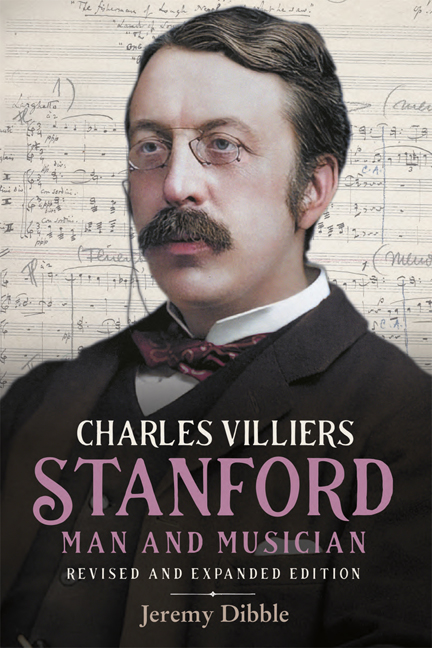Book contents
- Frontmatter
- Dedication
- Contents
- List of Illustrations
- List of Music Examples
- List of Analytical Tables
- Preface and Acknowledgements
- Supplementary Introduction to the Revised and Expanded Edition
- List of Sigla and Abbreviations
- I Early Influences and Impressions, 1852–70
- II Formative Years, 1870–87
- III Recognition, 1888–1901
- IV The New Generation, 1901–14
- V War and Decline, 1914–24
- Appendix: List of Works
- Select Bibliography
- Index of Works
- General Index
- Irish Musical Studies Previous volumes
Preface and Acknowledgements
Published online by Cambridge University Press: 12 May 2024
- Frontmatter
- Dedication
- Contents
- List of Illustrations
- List of Music Examples
- List of Analytical Tables
- Preface and Acknowledgements
- Supplementary Introduction to the Revised and Expanded Edition
- List of Sigla and Abbreviations
- I Early Influences and Impressions, 1852–70
- II Formative Years, 1870–87
- III Recognition, 1888–1901
- IV The New Generation, 1901–14
- V War and Decline, 1914–24
- Appendix: List of Works
- Select Bibliography
- Index of Works
- General Index
- Irish Musical Studies Previous volumes
Summary
My first contact with the music of Stanford was as a nine-year-old boy singing ‘Windy Nights’ (from A Child's Garland of Songs Op. 30) at the Stratford Festival; it was a song I particularly enjoyed, and to hear it sung many years later by Stephen Varcoe (surely one of this country's finest executants of English song) brought back many happy and vivid memories. Further acquaintance with Stanford's music included the immutable Evening Service in B flat, ‘Trottin’ to the fair’, the Three Latin Motets, Op. 38 and ‘The Blue Bird’, all of which, in their different apparels, struck me as strikingly original in design and expression. Thanks principally to the work of a highly imaginative and energetic music master, John Rippin, my knowledge of Stanford's church music broadened at grammar school. It was he who initially opened my eyes to Stanford's impeccable craftsmanship and originality and made me aware of the ‘other’ Stanford, a much-neglected composer of works such as the ‘Irish’ Symphony, the Songs of the Sea, the Songs of the Fleet, the funeral march from Becket, the Fourth Irish Rhapsody and the Second Piano Concerto. The quality, diversity and flawless professionalism of these rarely performed pieces took me aback and their distinctiveness seemed hard to reconcile with much of the casual criticism that dismissed Stanford as little more than a minor eclectic. During the late 1970s, as an undergraduate at Trinity College, Cambridge (where, to my delight, Stanford had been organist for nineteen years), my interest developed into a passion. With the encouragement of Philip Radcliffe, Richard Marlow and Peter Le Huray, who were largely responsible for encouraging me to pursue serious research into both Parry and Stanford, I began gradually to realise how little in the way of critical writings existed on both composers. It was to Parry that I devoted my initial attention, but while my work focused on him, it seemed inevitable that I would also feel the compulsion to make a study of Stanford at a later date. Significantly, this compulsion was founded not on the common textbook ‘partnership’ – ‘Parry ‘n Stanford’, the English Musical Renaissance's answer to Marks and Spencer – but on a desire to promote the essential and marked differences between the two men and their music, differences defined by aspiration, temperament and personal circumstances.
- Type
- Chapter
- Information
- Charles Villiers StanfordMan and Musician, pp. xviii - xxiPublisher: Boydell & BrewerPrint publication year: 2024

